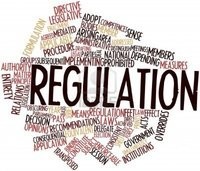The US Food and Drug Administration (FDA) released draft guidance on statistical approaches to evaluate similarity for biosimilars in September 2017 [1]. Comments from stakeholders on the guidance indicate that they want it to be more specific and narrower in scope.
Stakeholders comment on FDA’s draft statistical biosimilarity guidance
Home/Guidelines
|
Posted 08/12/2017
 0
Post your comment
0
Post your comment

The agency received 17 comments from stakeholders, which included pharma companies, such as Amgen, Boehringer Ingelheim, Genentech and Pfizer, as well as from physician associations, e.g. the Hematology/Oncology Pharmacy Association (HOPA), and industry groups, such as the Association for Accessible Medicines (AAM) and its Biosimilars Council [2, 3].
Pfizer acknowledged the challenges and limitations in applying statistical analyses to analytical similarity data. However, it said that the draft does not make it clear how a risk-based approach would address these obstacles. Pfizer also pointed out that the guidance fails to address biosimilar developers’ ‘absence of control over the reference product, whose quality attribute levels may change at any time during the proposed biosimilar product’s development’.
Industry group, the AAM and its Biosimilars Council also pointed out that the draft omits ‘what may be one of the most significant challenges and risks to the biosimilar developer. Specifically, the biosimilar developer has no control over the quality attributes of the reference product. Numerous studies have revealed changes over time in quality attributes of multiple reference products. It is important to acknowledge this risk in this paragraph as this can easily lead to shifts in the product mean that will impact equivalence testing’.
With respect to being more specific, Amgen recommends ‘the final guidance refer to “structural/physicochemical attributes and functional attributes” rather than the more general term “quality attributes”’. Meanwhile, Pfizer also had a comment about not being specific enough, saying that ‘the term analytical similarity plan is used both for the statistical similarity plan and the application of analytical procedures. For clarity, these two concepts should be clearly distinguished throughout the text’.
Genentech said that FDA should remove all references to orphan drugs and that ‘another document could perhaps be written for orphan products’.
Boehringer Ingelheim, although agreeing with FDA’s general approach, outlines two principles that it believes ‘should govern the use of analytic similarity assessment plans for all medicines’. The company goes on to say ‘First, we believe it is imperative that FDA apply scientific and regulatory consistency to all biologic[al]s, including biosimilars and interchangeable biologic[al]s, to prevent any disparate treatment of these products. Second, FDA should continue to recognize that for all biologic[al]s prior knowledge, e.g. understanding of quality attributes of the biologic[al], molecular basis of the disease, understanding about vulnerable populations, is a critical element to consider for evaluation of similarity, and that this is particularly relevant for biosimilars and interchangeable biologic[al]s but not unique to them.’
HOPA, on the other hand, thought that FDA should ‘partner with professional organizations such as HOPA to provide biosimilar education, specifically regarding analytical similarity’. The group also encourages ‘the FDA to promote regulations that allow for the timely access to reference lots for manufacturers who seek to make biosimilars’.
Editor’s comment
Readers interested to learn more about interchangeability are invited to visit www.gabi-journal.net to view the following manuscripts published in GaBI Journal:
Interchangeability of biosimilars in the US and around the world
Demonstrating interchangeability and biosimilarity for US biosimilars
Physician associations comment on FDA’s interchangeability guidance
GaBI Journal is indexed in Embase, Scopus, Thomson Reuters’ ESCI, and more.
Readers interested in contributing a research or perspective paper to GaBI Journal – an independent, peer reviewed academic journal – please send us your submission here.
Related articles
Comments on extrapolation in FDA’s interchangeability guidance from big pharma
Comments on FDA’s interchangeability guidance
Reference
1. GaBI Online - Generics and Biosimilars Initiative. FDA issues draft guidance on statistical approaches to evaluating similarity for biosimilars [www.gabionline.net]. Mol, Belgium: Pro Pharma Communications International; [cited 2017 Dec 8]. Available from: www.gabionline.net/Guidelines/FDA-issues-draft-guidance-on-statistical-approaches-to-evaluating-similarity-for-biosimilars
2. GaBI Online - Generics and Biosimilars Initiative. Comments on switching in FDA’s interchangeability guidance from big pharma [www.gabionline.net]. Mol, Belgium: Pro Pharma Communications International; [cited 2017 Dec 8]. Available from: www.gabionline.net/Guidelines/Comments-on-switching-in-FDA-s-interchangeability-guidance-from-big-pharma
3. GaBI Online - Generics and Biosimilars Initiative. Big Pharma comments on FDA’s interchangeability guidance [www.gabionline.net]. Mol, Belgium: Pro Pharma Communications International; [cited 2017 Dec 8]. Available from: www.gabionline.net/Guidelines/Big-Pharma-comments-on-FDA-s-interchangeability-guidance
Permission granted to reproduce for personal and non-commercial use only. All other reproduction, copy or reprinting of all or part of any ‘Content’ found on this website is strictly prohibited without the prior consent of the publisher. Contact the publisher to obtain permission before redistributing.
Copyright – Unless otherwise stated all contents of this website are © 2017 Pro Pharma Communications International. All Rights Reserved.
Source: US FDA
Policies & Legislation
Argentina streamlines drug approval process
ANVISA tackles 24-month backlog in biologicals post-registration petitions
Most viewed articles
The best selling biotechnology drugs of 2008: the next biosimilars targets
Global biosimilars guideline development – EGA’s perspective
New guidance for biologicals in Pakistan and Hong Kong’s independent drug regulatory authority

Home/Guidelines Posted 20/10/2025
Canada poised to remove requirement for Phase III trials for biosimilars

Home/Guidelines Posted 22/07/2025
The best selling biotechnology drugs of 2008: the next biosimilars targets








Post your comment